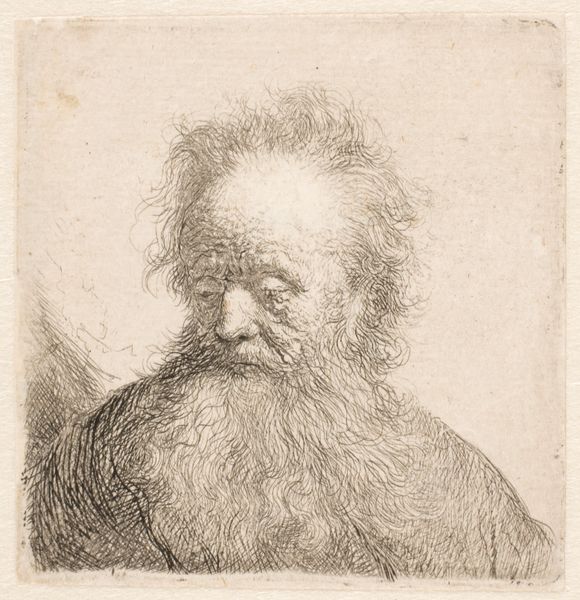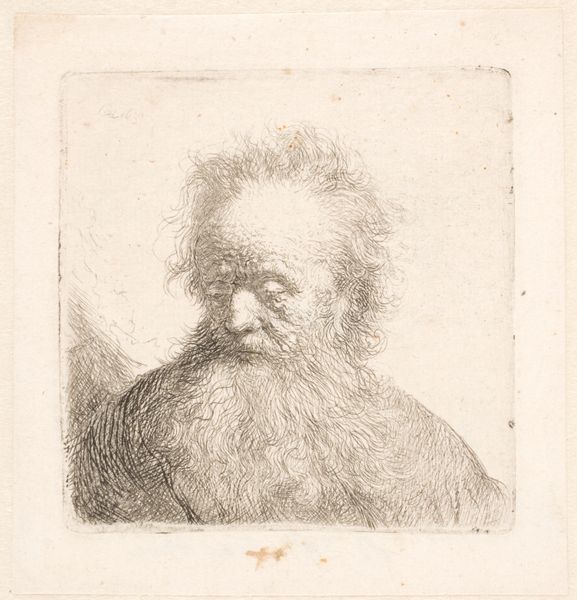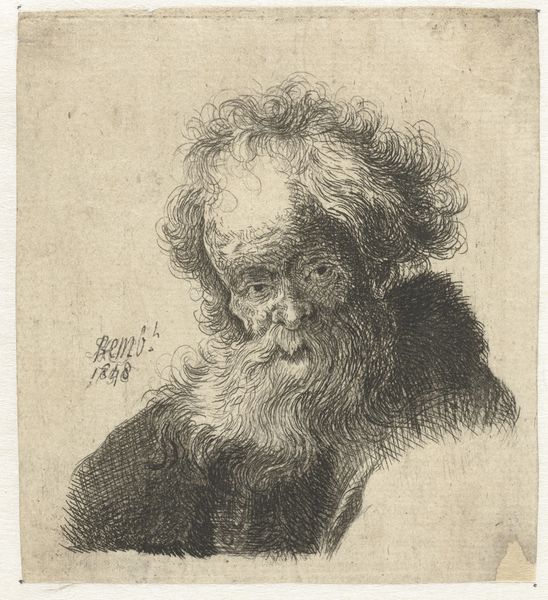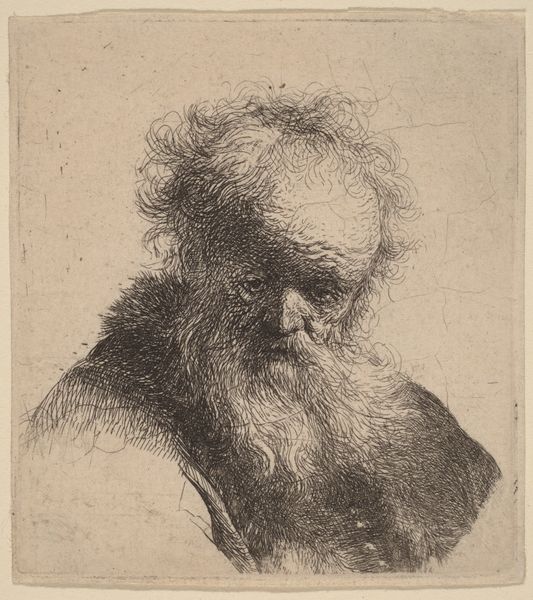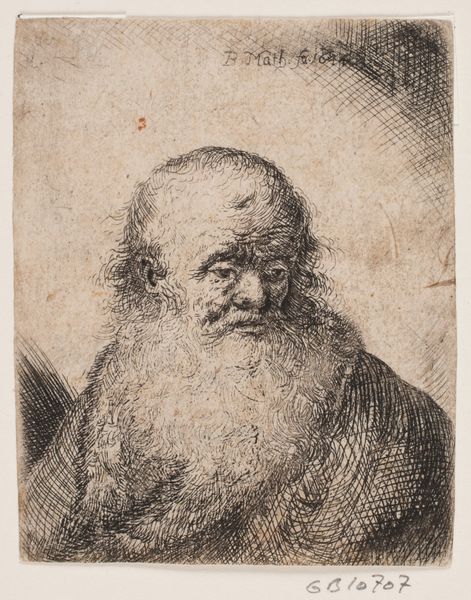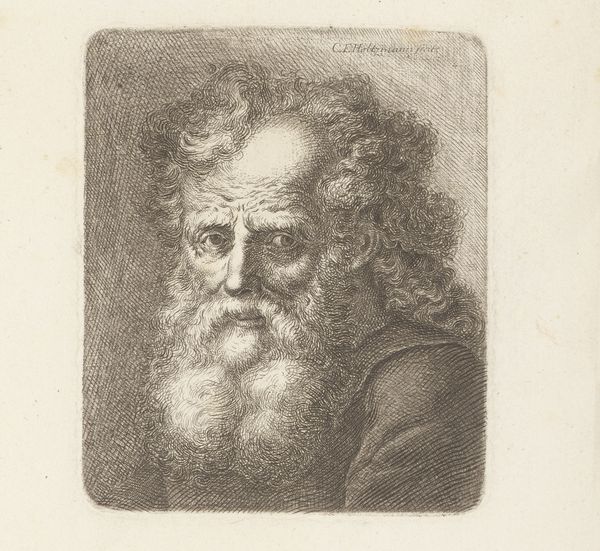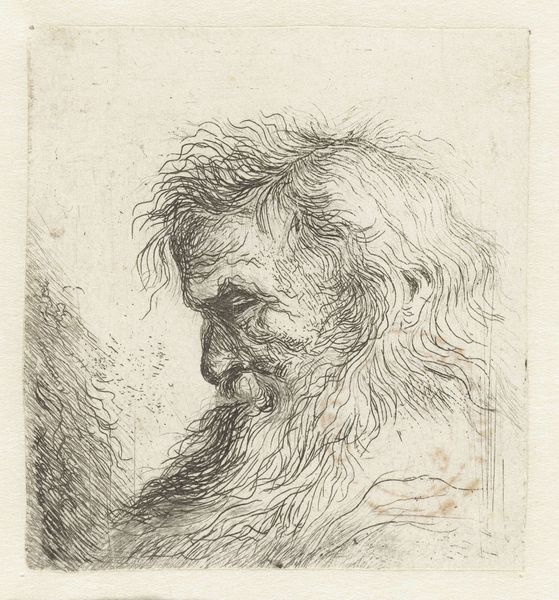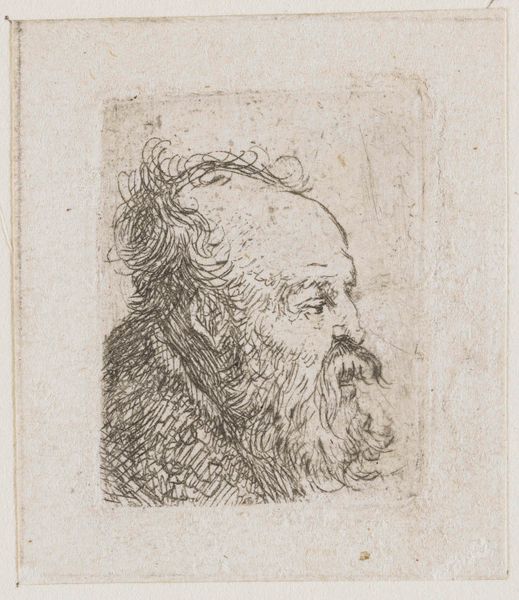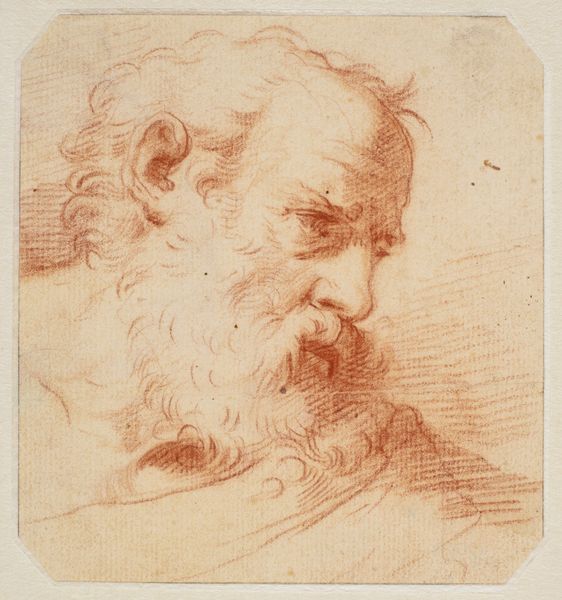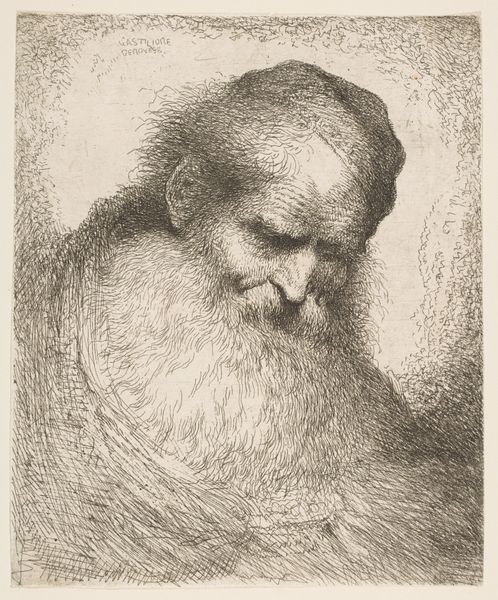
print, etching
#
portrait
#
baroque
#
dutch-golden-age
# print
#
etching
#
figuration
#
line
Dimensions: height 68 mm, width 66 mm
Copyright: Rijks Museum: Open Domain
This etching, Old Man with a Flowing Beard, was made by Rembrandt van Rijn in the 17th century. Rembrandt was a master of etching, a printmaking technique that uses acid to cut lines into a metal plate, which is then inked and pressed onto paper. The magic of etching lies in its ability to capture fine detail and subtle tonal gradations. Look closely, and you'll see how Rembrandt used a network of lines to create the texture of the old man's beard, hair, and wrinkled skin. The varying depths and densities of these lines give the image a remarkable sense of depth and volume. What's fascinating is that etching allowed Rembrandt to produce multiple impressions of the same image. In a way, it was a proto-industrial process, making art more accessible to a wider audience beyond wealthy patrons. Each print is an original, bearing the marks of Rembrandt’s hand, and also bearing the marks of early capitalism. Ultimately, this small print reminds us that even the most seemingly simple works of art are the result of a complex interplay between materials, techniques, and social context.
Comments
rijksmuseum about 2 years ago
⋮
In these prints, Rembrandt studies the characteristics of age, always portraying the same full-bearded man. While slight differences can certainly be discerned, Rembrandt’s penchant for depicting his models while they look down, their heads slightly bent, is striking. This pose lends the studies a melancholy air.
Join the conversation
Join millions of artists and users on Artera today and experience the ultimate creative platform.
